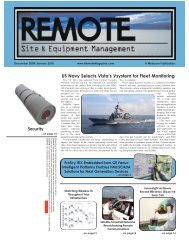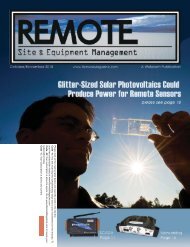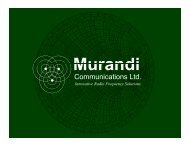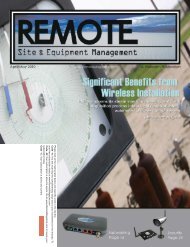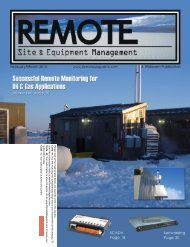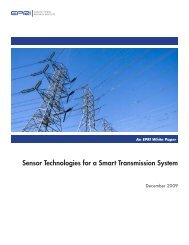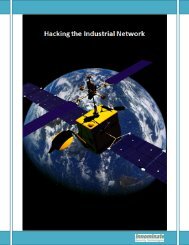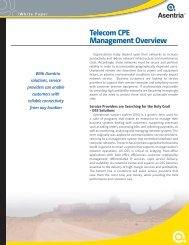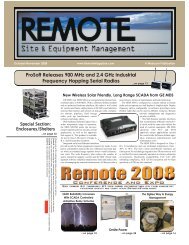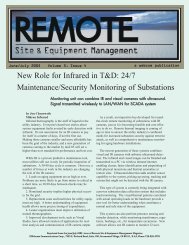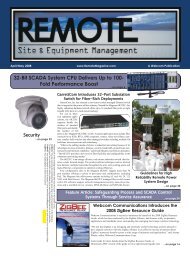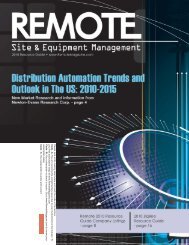Electricity for Free? The Dirty Underbelly of SCADA and Smart Meters
Electricity for Free? The Dirty Underbelly of SCADA and Smart Meters
Electricity for Free? The Dirty Underbelly of SCADA and Smart Meters
Create successful ePaper yourself
Turn your PDF publications into a flip-book with our unique Google optimized e-Paper software.
Power Transmission<strong>The</strong> Distribution ProcessAs stated be<strong>for</strong>e, electric energy cannot be stored, so the amount produced through the electricgeneration process, <strong>and</strong> transmitted through the EMS (Energy Management Systems), must beimmediately transported to a load where it can be consumed. Distribution Management Systems(DMS) utilize similar <strong>SCADA</strong> technologies as power generation <strong>and</strong> transmission systems.Distribution systems have the ability to remotely disconnect or shed large sections <strong>of</strong> load ifrequired to protect the stability <strong>of</strong> the grid.Distribution systems also have the requirement to monitor <strong>and</strong> bill <strong>of</strong>f <strong>of</strong> the usage <strong>of</strong> the power.Prior to the movement to digitize power meters, the customer meter was an analog meter thatwas read manually by a meter reader technician. Over the past ten years, many powercompanies have invested in AMR (automatic meter reading) projects that either read the meterby rolling a truck through the neighborhood to locally electronically collect usage data wirelessly,or by remotely reading the meters through a variety <strong>of</strong> communication methods that includeWiMax, Cellular, Broadb<strong>and</strong>-over-Power, Power Line Carrier, or dual-use circuits shared by theDMS system.At the end <strong>of</strong> 2009, the Obama Administration released billions <strong>of</strong> dollars under the federalstimulus act to drive technological innovation in the areas <strong>of</strong> clean technologies <strong>and</strong> smart-gridnetworks. <strong>The</strong> goal was to inject investments into the electric grid to break down the legacybarriers between generation, transmission, <strong>and</strong> distribution systems to eventually create a“<strong>Smart</strong> Grid” that can be used by power producers, transmitters, consumers, <strong>and</strong> researchers t<strong>of</strong>acilitate a more robust <strong>and</strong> flexible power grid.<strong>The</strong> first step in creating a “<strong>Smart</strong> Grid” involves converting the old analog electric meters intodigital “<strong>Smart</strong> <strong>Meters</strong>” that can be polled remotely. This new injection <strong>of</strong> money into the electricindustry fueled an entire industry <strong>of</strong> AMR <strong>and</strong> “<strong>Smart</strong> Meter” companies that manufacture digitalmeters than utilize a variety <strong>of</strong> communication methods <strong>for</strong> remote meter management <strong>and</strong>meter reading. <strong>The</strong>se AMR systems are typically interconnected with the DistributionManagement Systems, Enterprise IT systems, <strong>and</strong> other 3 rd party networks.<strong>The</strong> network diagram on the next page depicts a typical Power Distribution System, <strong>and</strong>common connection points with Enterprise IT systems, other outside networks, <strong>and</strong> AutomatedMeter Reading infrastructures.pg [ 8 ]



